| In past usage of the term a “chauffeur” was any
person who drove a motor vehicle for hire, carrying persons or cargo.
Examples included taxi drivers, bus drivers and commercial truck
drivers. Beginning on January 1, 1938, these persons were required to
obtain a chauffeur’s license, and with that license came a small metal
badge bearing a serial number matching the corresponding number on the
paper license. In 1945 legislation was passed providing for the optional
purchase of 2-year and 3-year licenses. In some such instances
multi-year badges were provided, whereas in other instances a badge was
received which indicated the last year that the license was valid. The
badges and licenses were in use 1938 through 1957, and were ultimately
superseded by the commercial driver’s license (CDL). In keeping
with the need to conserve metal during World War II, the 1944 and 1945
badges were made of laminated cardboard. 1939 large size badge
courtesy Keith Austin. All others by Bill Johnston. |
| |
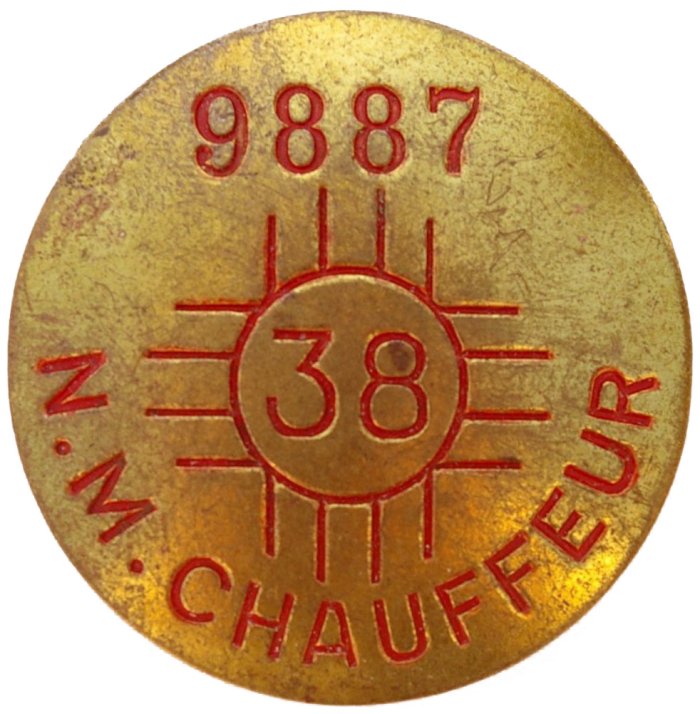
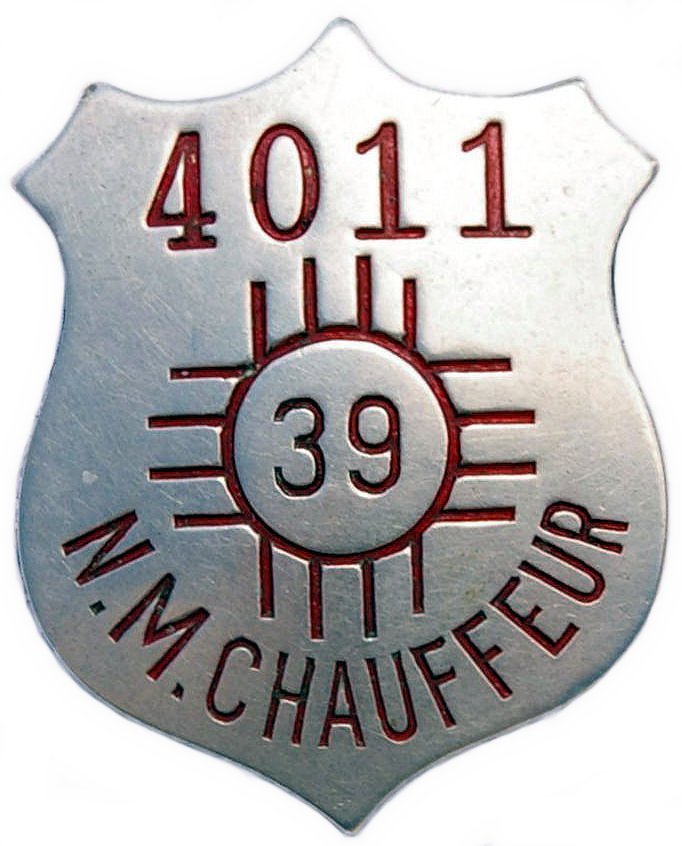
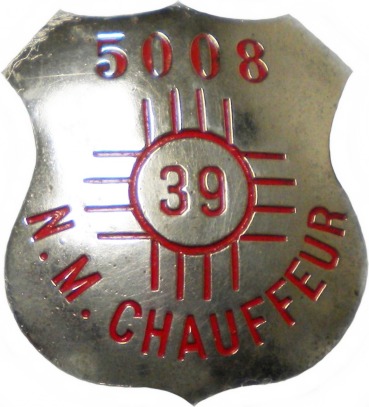
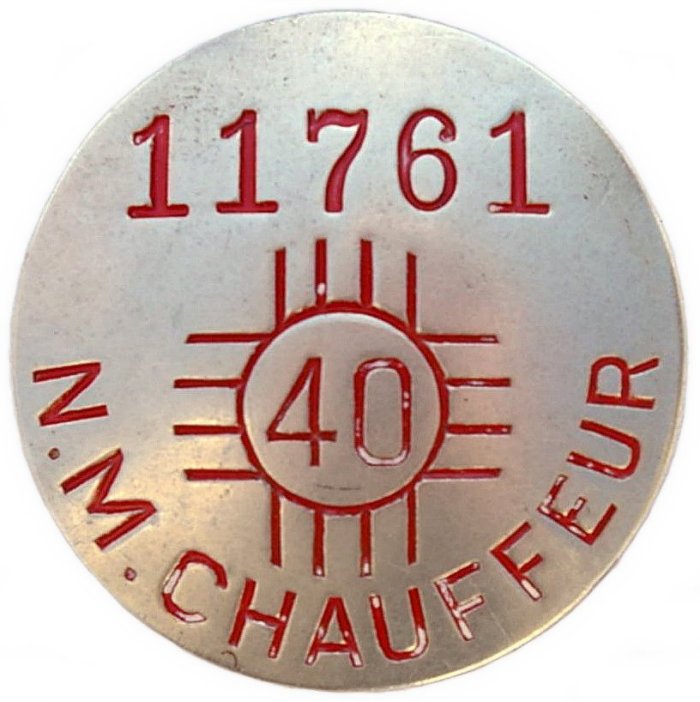
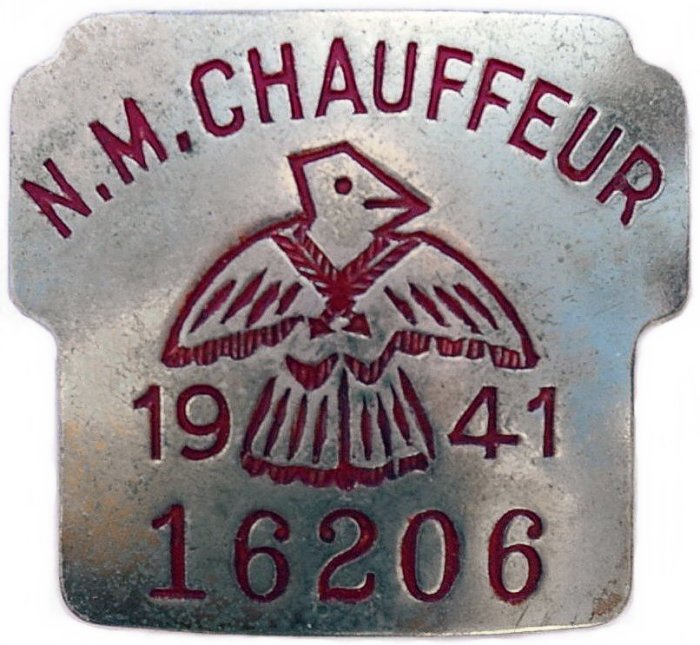
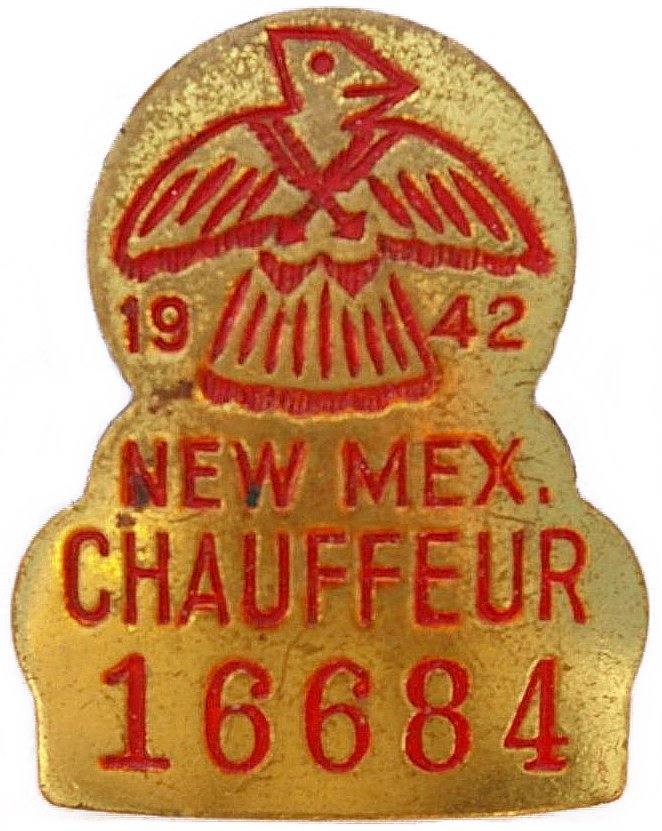
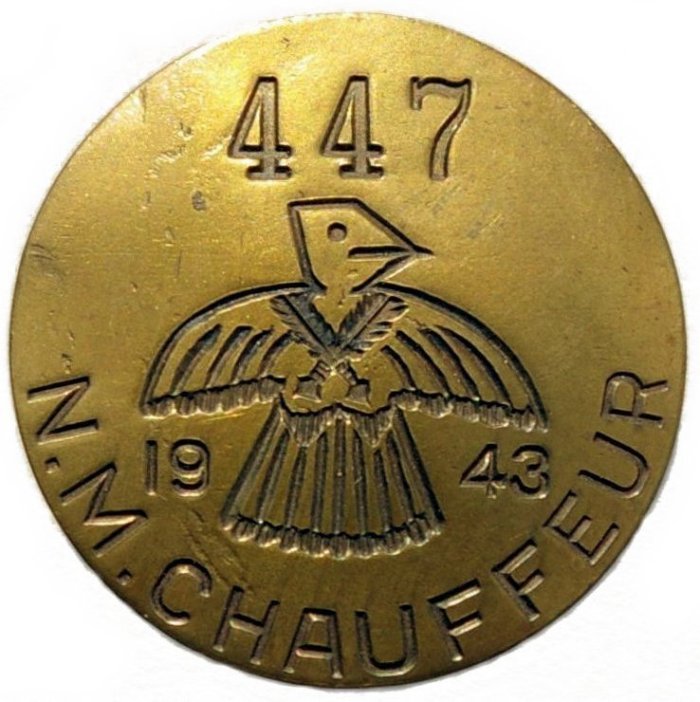
 |
| |
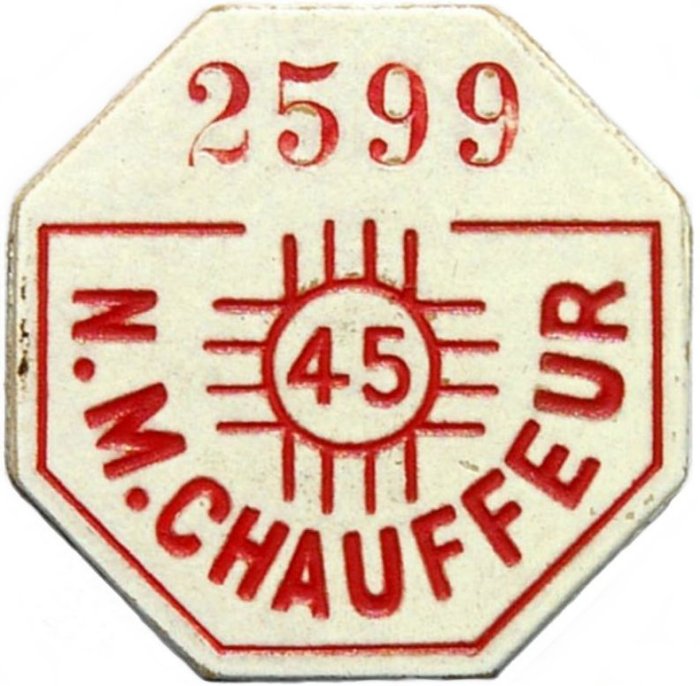
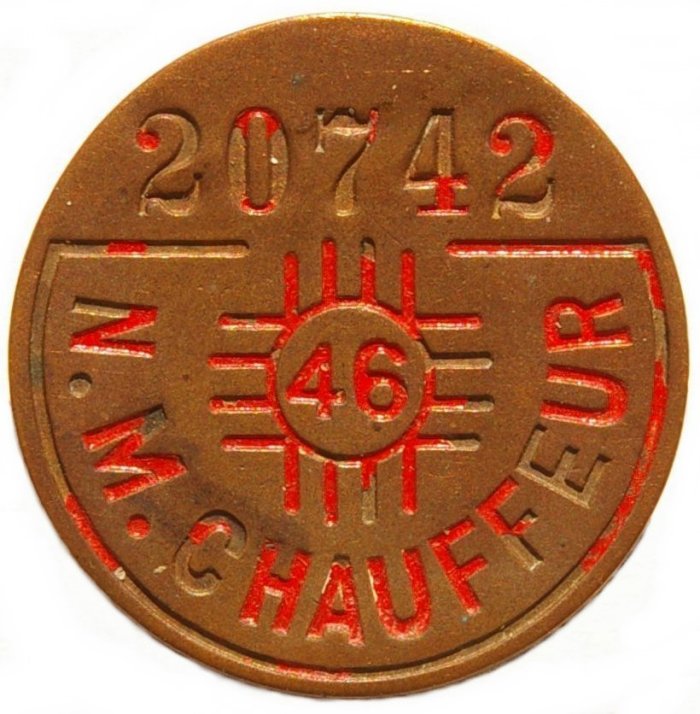

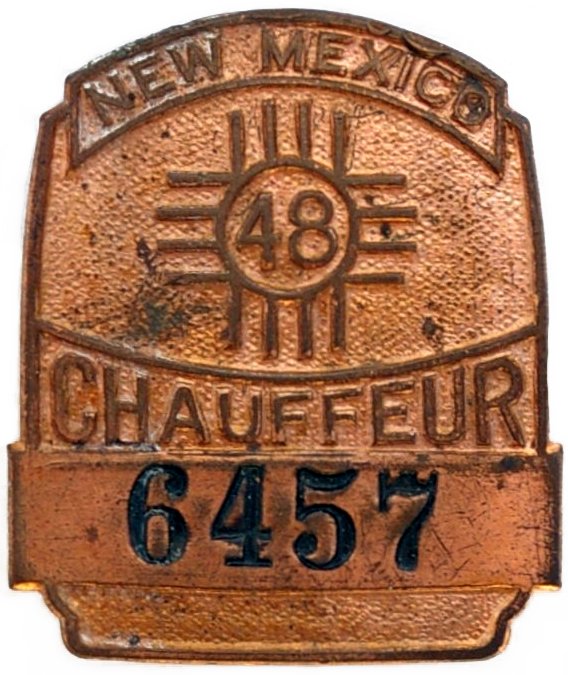
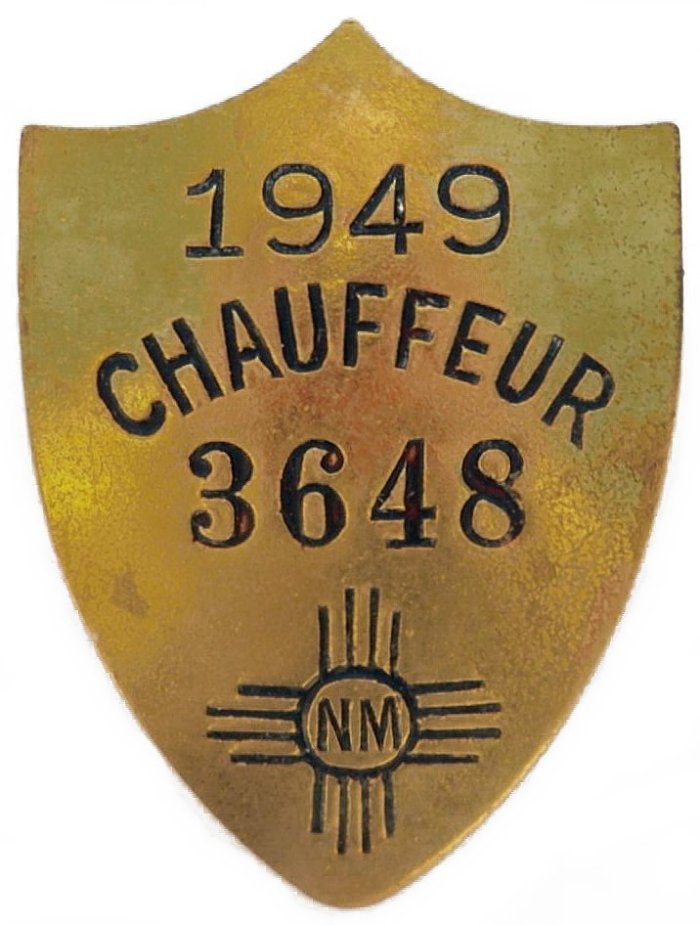
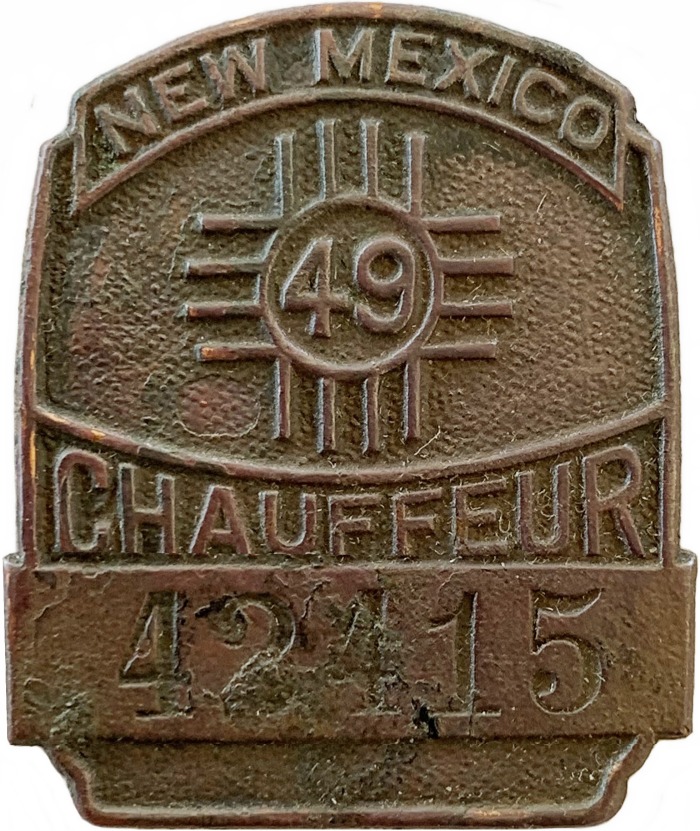
 |
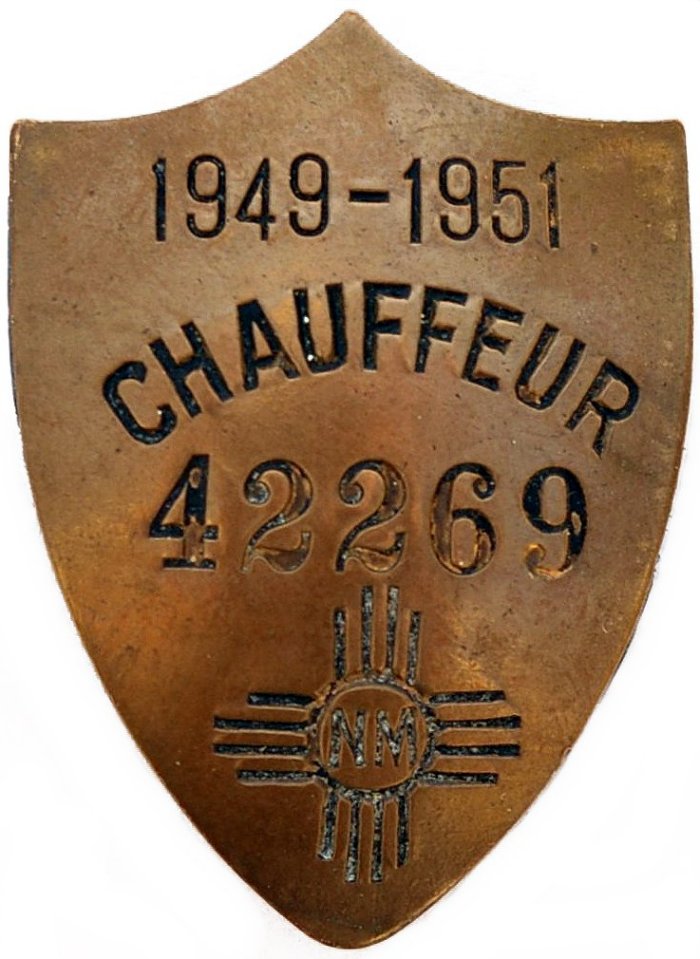
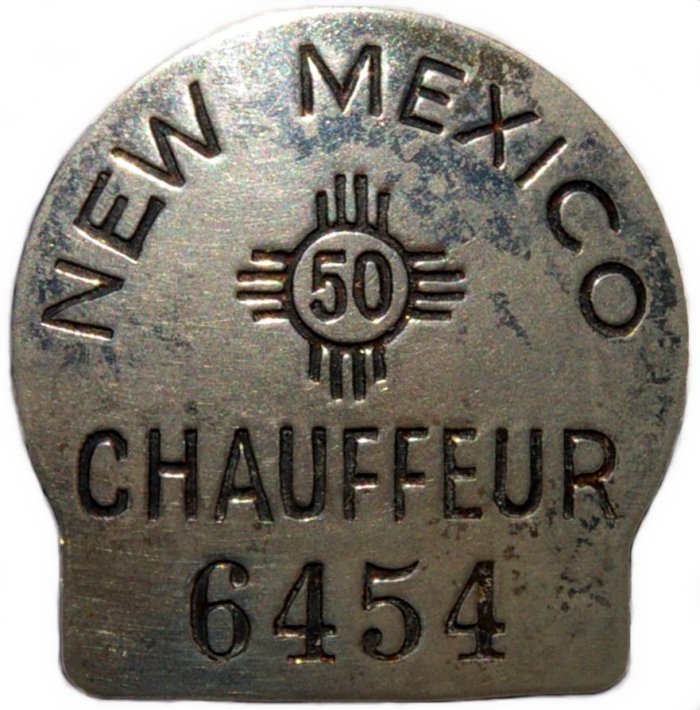
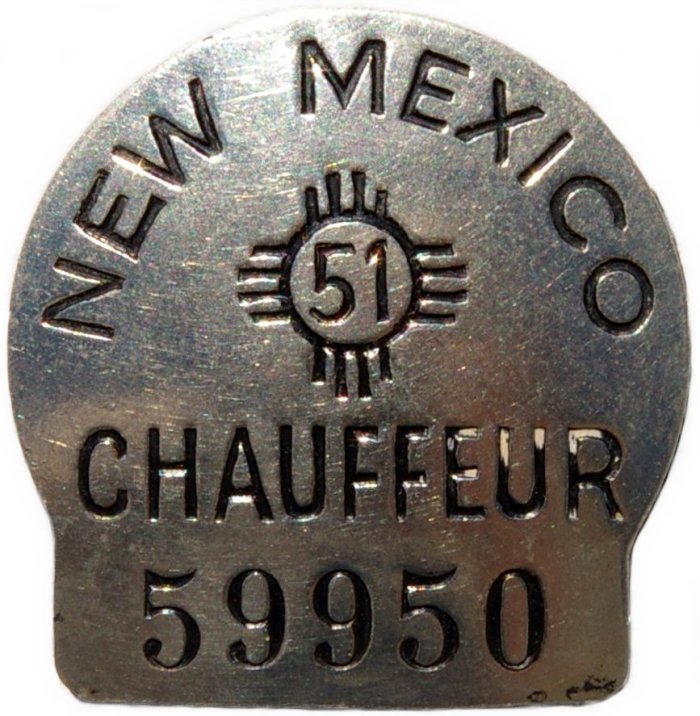
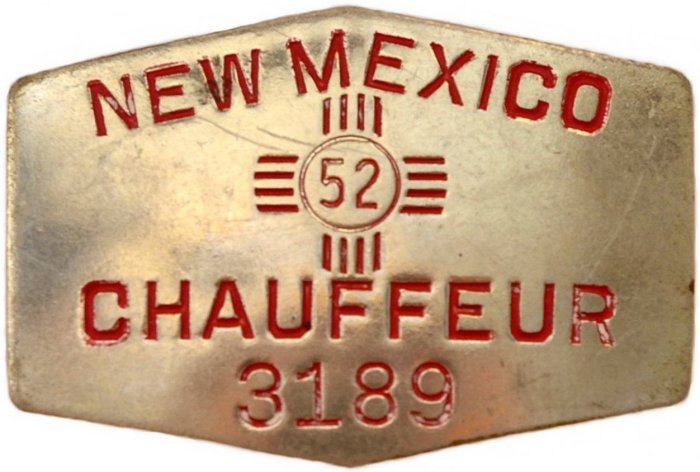
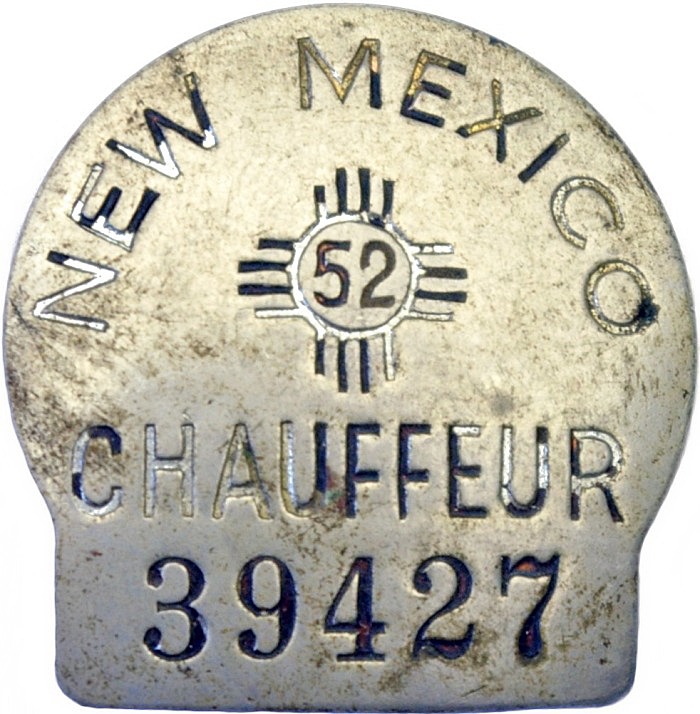 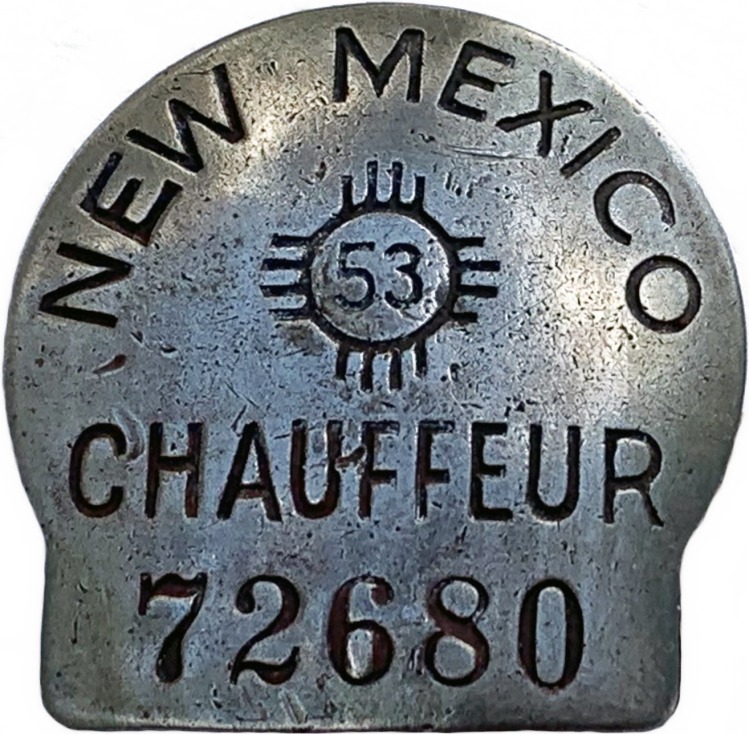
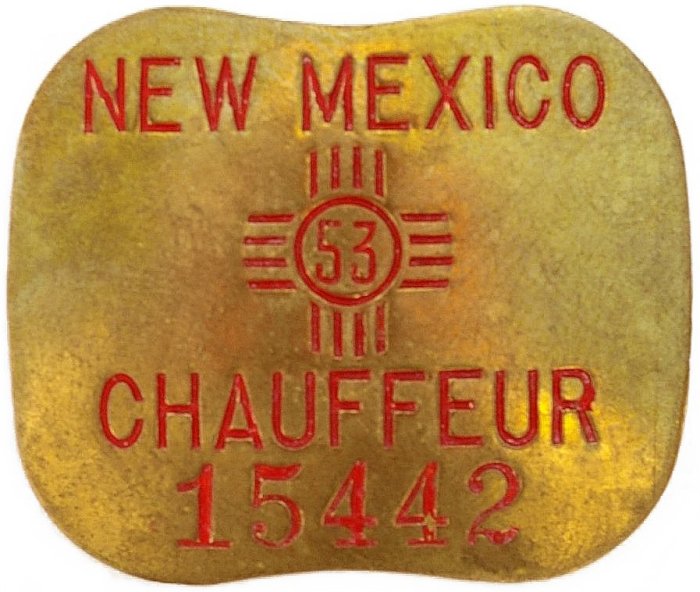 |
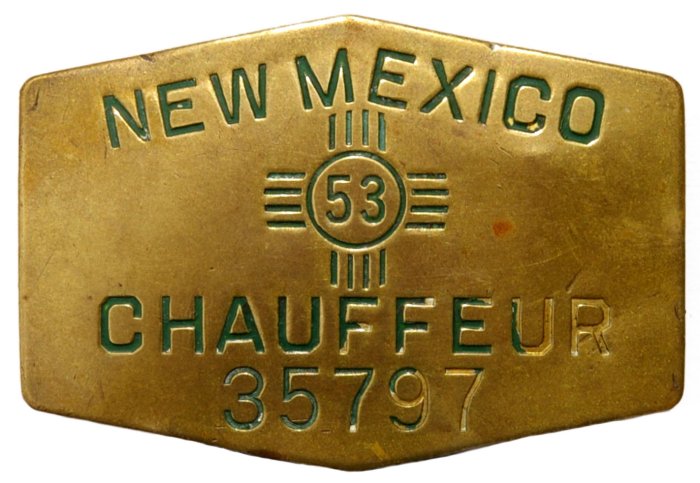
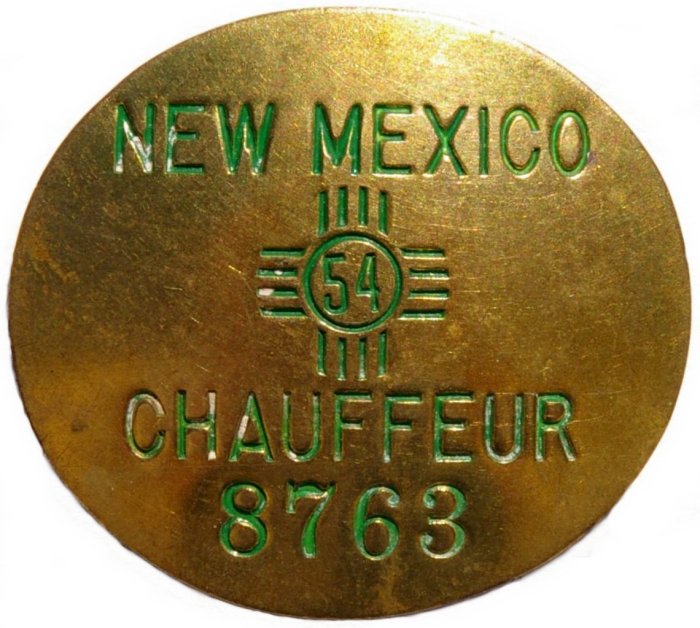
.JPG)

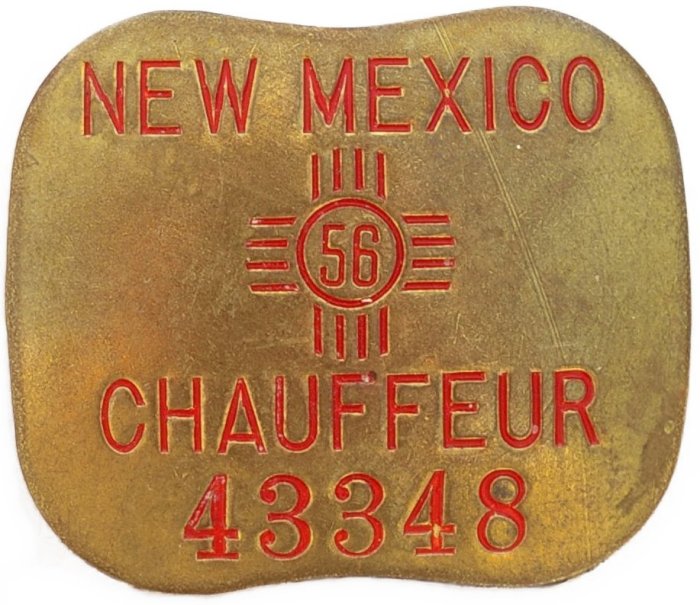
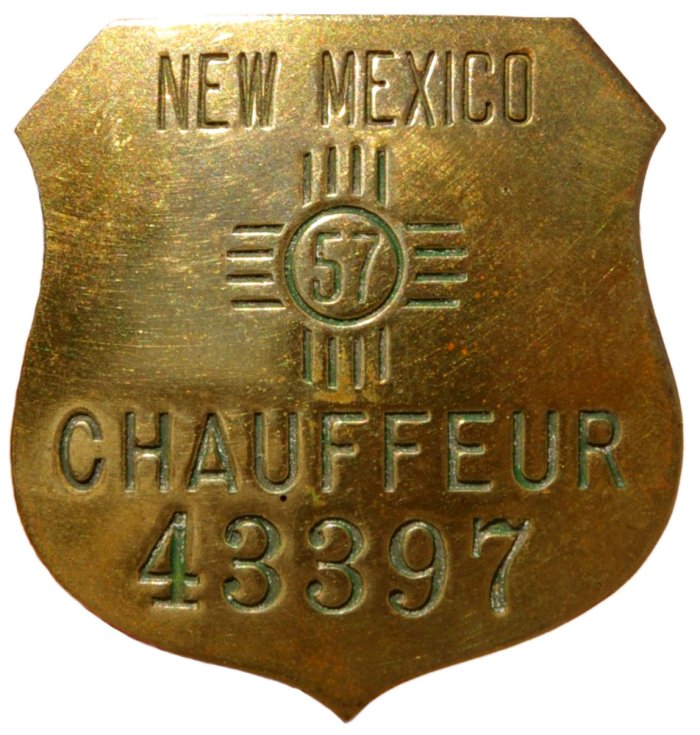 |
|
|
|
|
|
Sample Chauffeur Badges |
The sample chauffeur badges illustrated here are the only ones known,
though it seems likely that they must exist for other years as well.
1947 courtesy Keith Austin. 1952, 1952-1953, 1952-53-54 courtesy
Collection of Dr. Edward H. Miles @ EdMilesAuto.com. |
|
|


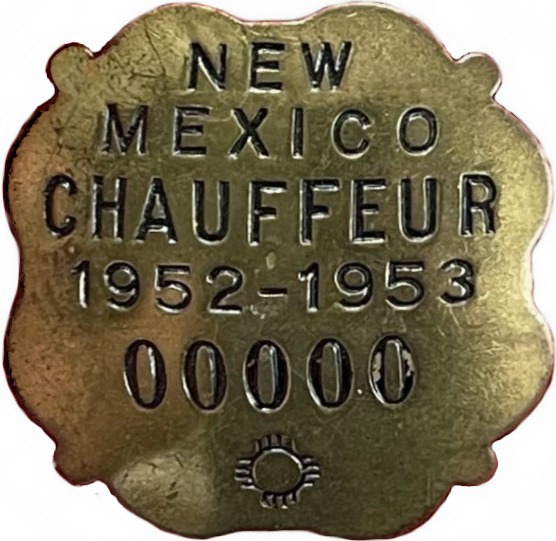
 |
| |
| |
| Low Numbered Chauffeur Badges |
| |
Shown here is a selection of badges whose serial
numbers have three digits or less, i.e., are within the range 1-999.
1938, 1942, 1952 Courtesy Keith Austin. 1940, 1943, 1947, 1949,
1950, 1953, 1954, 1955 courtesy Collection of Dr. Edward H. Miles @
EdMilesAuto.com. |
| |

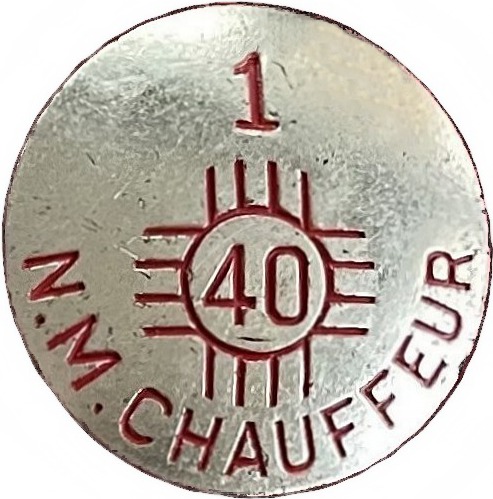
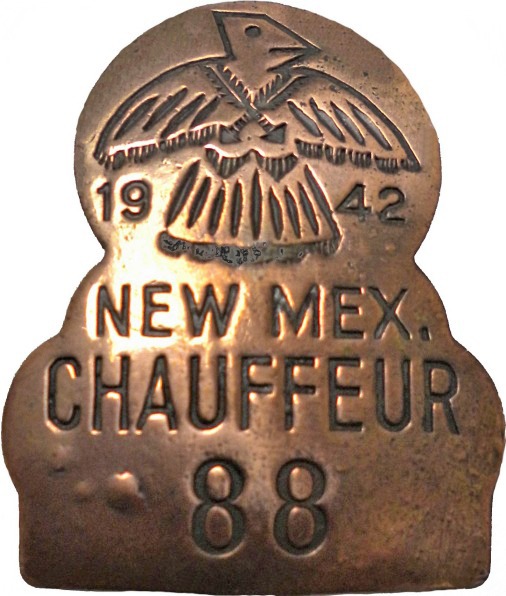

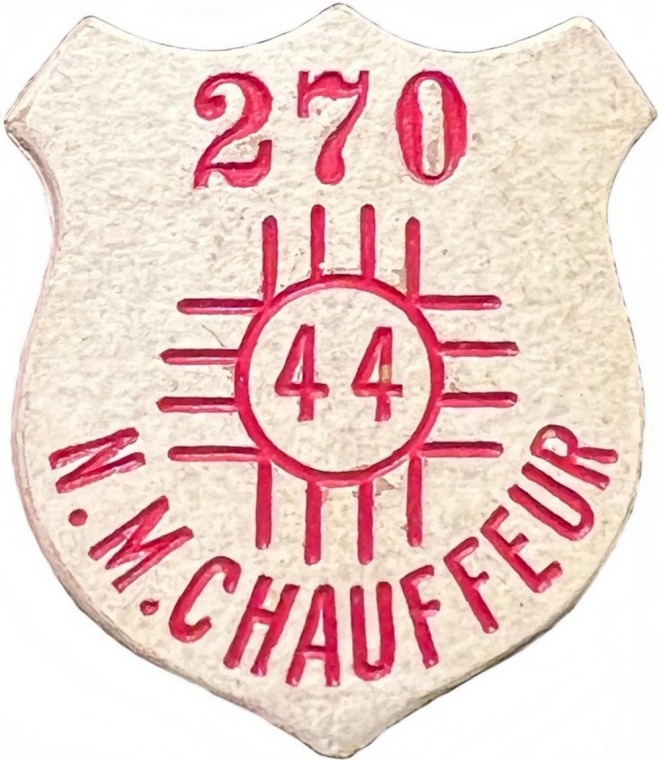
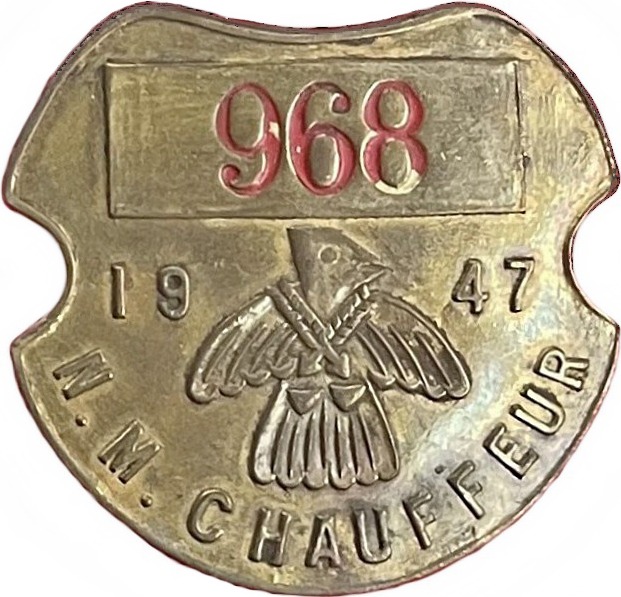
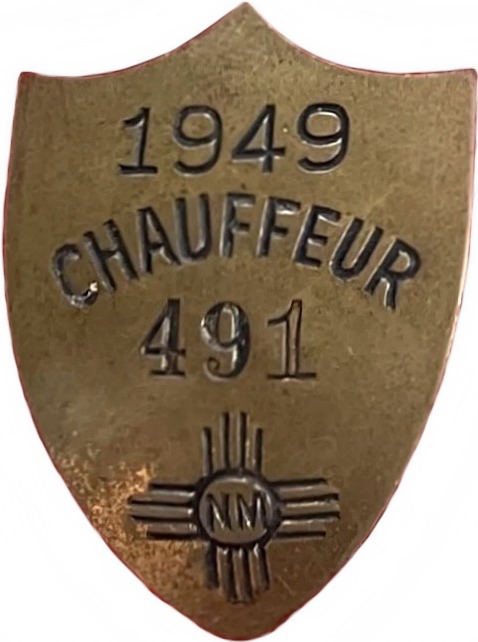 |
| |
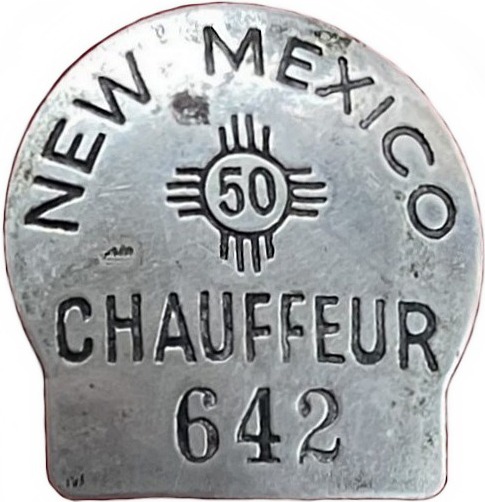
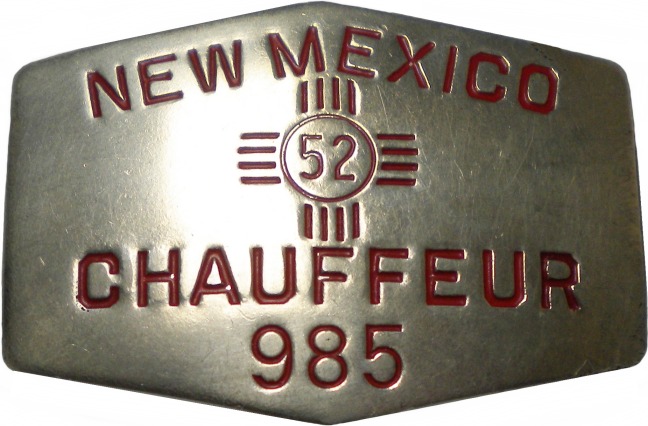
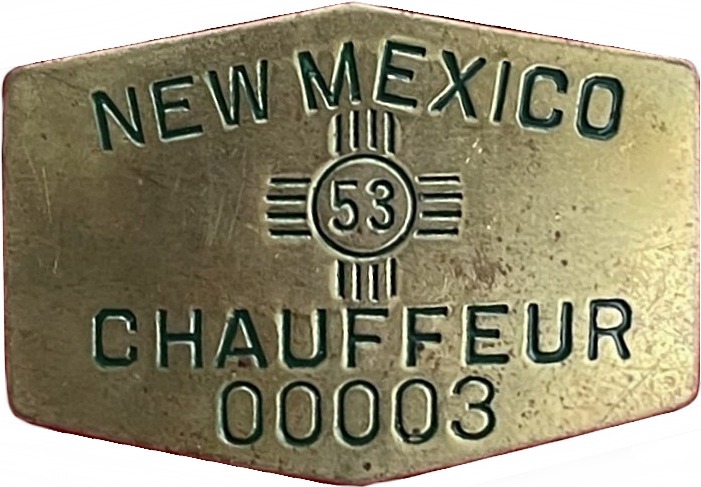
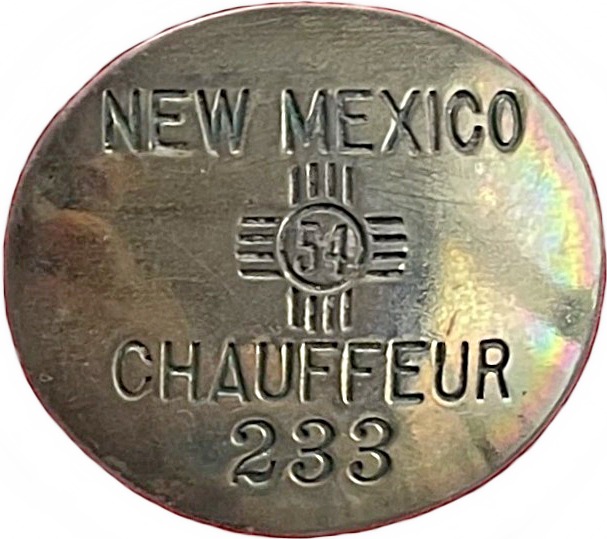
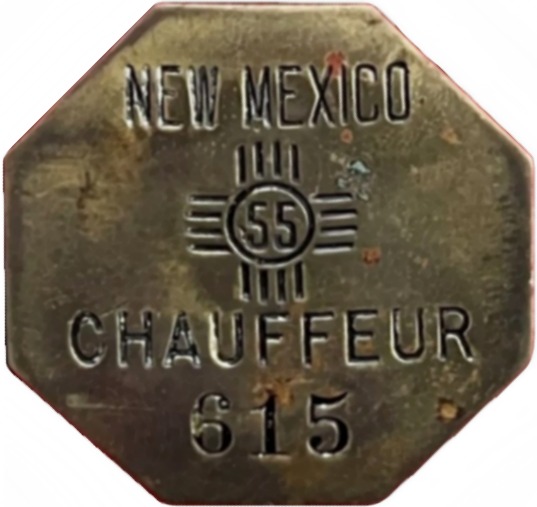 |
| |
| 1944 #270 courtesy Jason, Red Dirt Antiques. |
| |
| |
| Chauffeur Badges With Nice Numbers |
| |
| The idea of what constitutes a “nice” number is
subjective, but here are a few that we think are nice. 1938 #111,
1942 #88 courtesy Keith Austin. 1940 #1, 1942 #20000, 1959 #22222
courtesy Collection of Dr. Edward H. Miles @ EdMilesAuto.com. |
| |
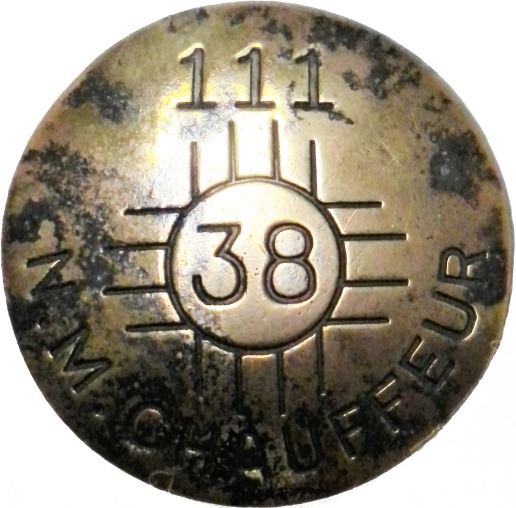
.jpg)

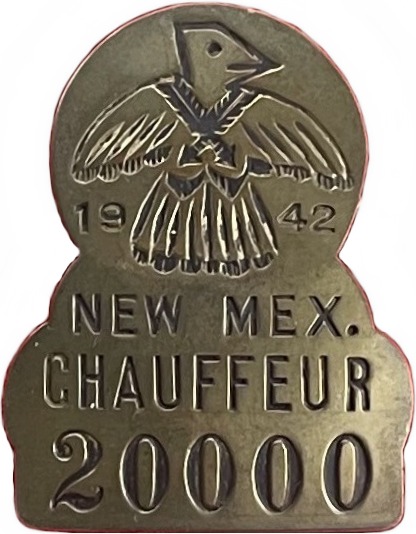
 |
| |
| |
| |
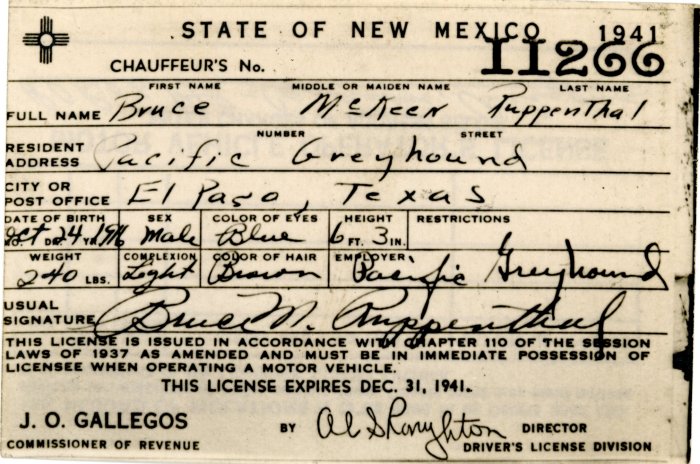 |
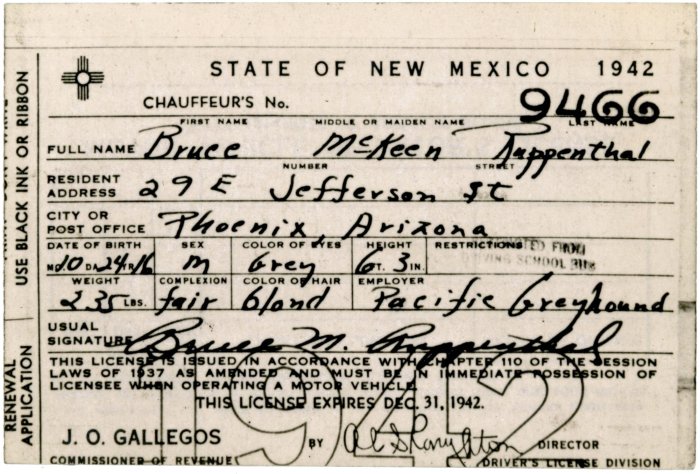
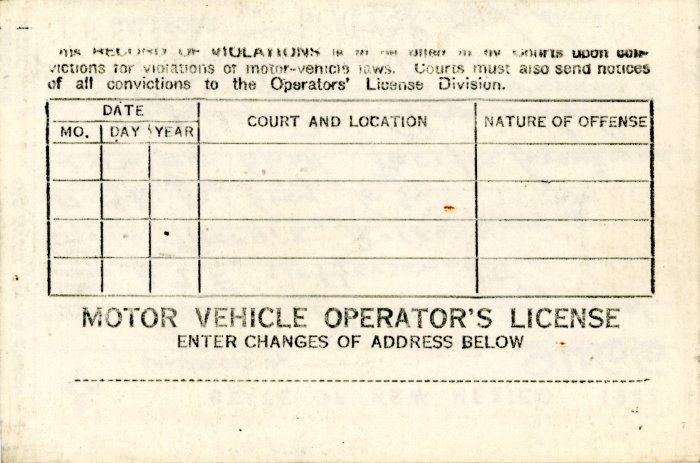 |
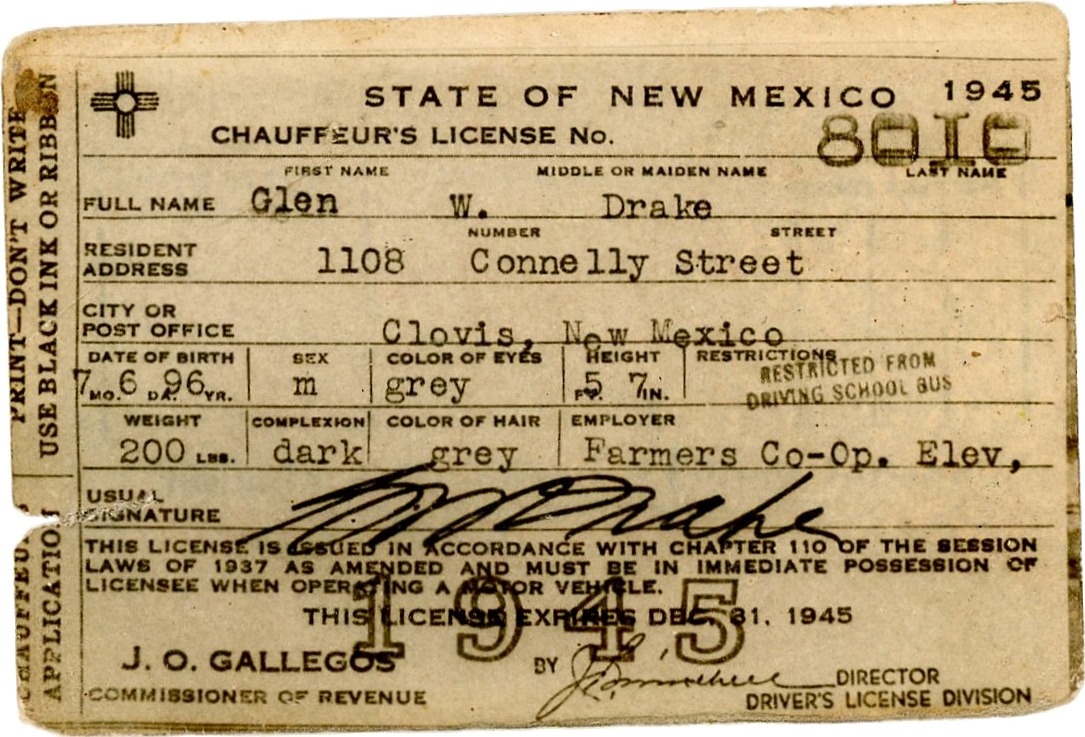 |
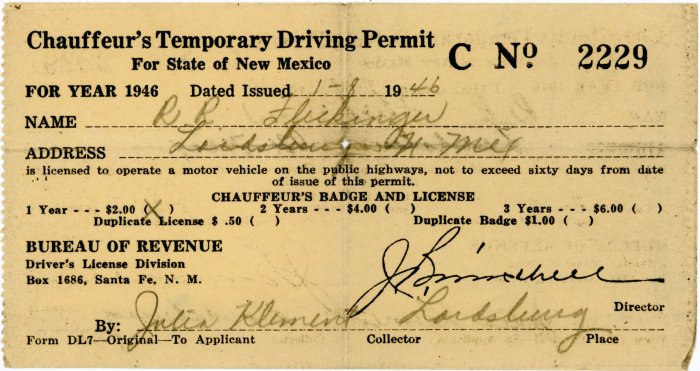 |
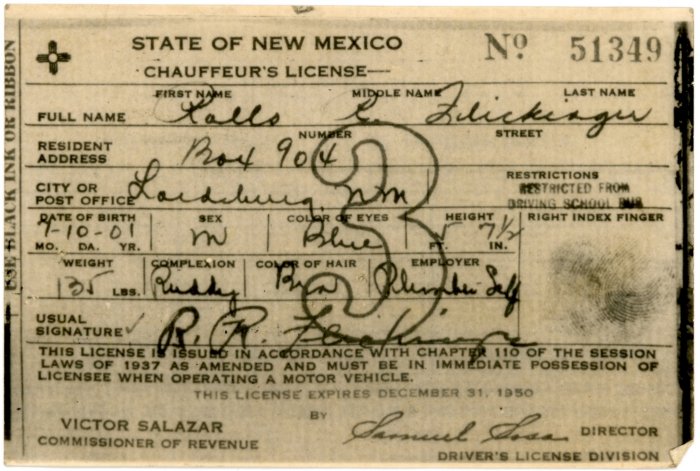
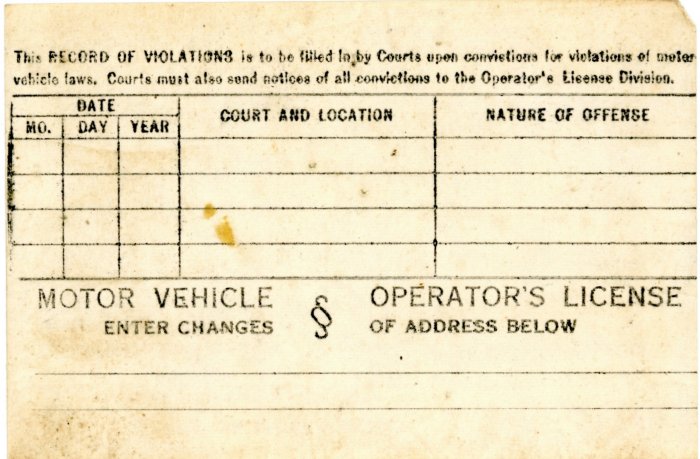 |
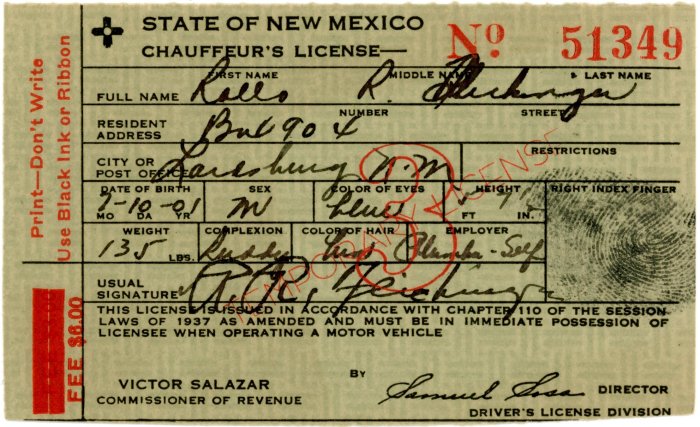
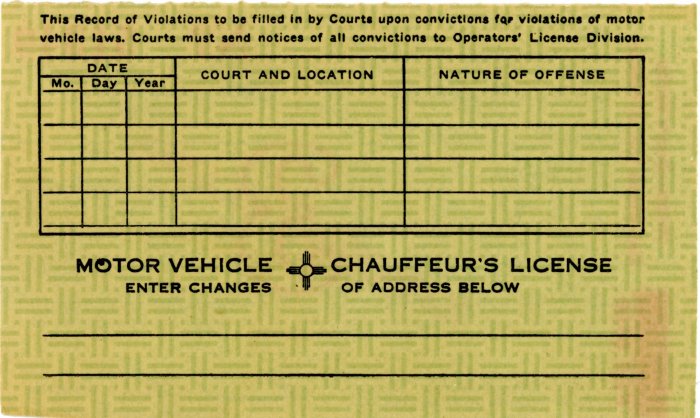 |
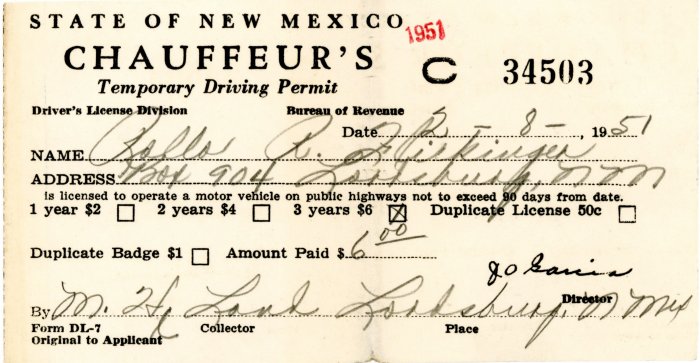 |
| |





















.jpg)












